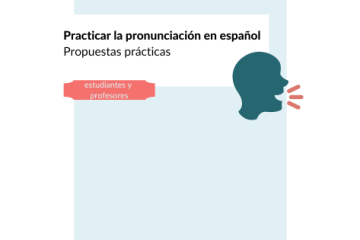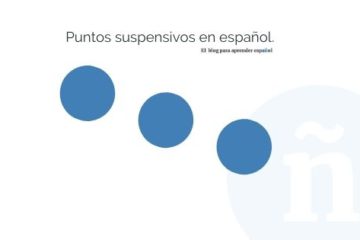Nine uses of se
The Nine Se’s
When reading texts in Spanish it can be very confusing for a non-native speaker to understand the meaning of the simple word se. Unlike other words, se has nine different grammatical uses. Only by studying and understanding each of these uses can the intention become clear when hearing or reading the two letter word se.
- Reflexive Se – Se Reflexivo
The most straight forward use of se is the reflexive se. A reflexive verb has the same subject and object. Sometimes in English, we will add the words myself or herself. In Spanish in the 3rd person singular or plural, the word se makes the verb reflexive. The word se in this case is a reflexive object pronoun showing that the action of the verb remains with the subject.
Reflexive verbs are part of a larger set of verbs called pronominal. All pronominal verbs use matching pronouns depending upon the class of person. The subset of reflexive verbs are generally verbs dealing with the body, clothing and feelings. A few other verbs are reflexive when an action is done for oneself by others.
My daughter combs her hair in the bathroom.
Mi hija se peina en el baño.
Move on! Don’t stay here unlawfully.
¡Muévase! No se detenga.
They all became happy at our success.
Todos se alegraron de nuestro éxito.
He is building the modern house for himself. (he paid for the construction).
Se construye la casa moderna.
- Pronominal Only Se – Se Pronominal Puro
A handful of pronominal verbs in Spanish are only reflexive and do not have a counterpart version without a se. These verbs always require a reflexive object pronoun.
- arrepentirse – to repent
- jactarse – show off
- quejarse – complain
- suicidarse – to commit suicide
He regretted that he said that.
Se arrepintió de decir eso.
- Reciprocal Se – Se Recíproco
The reciprocal se is for actions people are performing on or doing with each other. In Spanish se is used for mutual actions in the third person plural.
The partners both agreed to separate.
Los cónyuges se separaron de mutuo acuerdo..
They fought because they did not understand each other.
Se pelearon porque no se entendían.
- Se Changing the Meaning – Se que cambia el significado del verbo
Some verbs have different meanings once the se is added. These are also pronominal verbs like the reflexive verbs. Here is a list of eight of the common verbs that have two meanings: without a pronoun and with a pronoun.
- admirar – to admire; admirarse – to be amazed
- dormir – to sleep; dormirse – to fall asleep
- fijar – secure an object ; fijarse – to notice
- ir – to go to a destination; irse – to leave from
- ocupar – take up space in; ocuparse – to be busy
- parecer – seems like; parecerse – to physically look alike
- pasar – to pass; pasarse – to exaggerate
Go away!
¡Vete!
- Se as an Indirect Object Pronoun – Se pronombre de complemento indirecto
The Spanish indirect object pronouns in the third person are le and les for the singular and plural cases respectively. But in sentences also using the the third person direct objects of lo, la, los or las, the le and les are replaced by se. This usage is to avoid having two short words together starting with the letter l.
She gives it to him.
Ella se lo da. (Ella le lo da).
He built the houses (las casas) for them.
Él se las construyó. (Él les las construyó).
- Emphatic Se – Se de Interés o Se Dativo
The emphatic se is added to give emphasis to a sentence with a 3rd person subject. Note, the emphatic se can be any of the reflexive object pronouns (me, te, nos or os). These are used typically in a positive manner.
She drove through the night!
¡Se pasó la noche conduciendo!
She won first prize!
¡Se ha ganado el mejor premio!
- No Fault Se – Se Involuntario
The no fault se is added to a sentence in order to remove personal responsibility. The se indicates that somehow something occurred without the speaker’s involvement. The object that caused the incident is a physical object.
The cake burned
La tarta se quemó.
The glass fell down.
El vaso se cayó.
Did your homework forget you?
¿Los deberes se te olvidaron?
Se Using the Passive Voice
The final two instances when se is used are both in the passive voice without a subject. The impersonal se does not have a direct object; passive se has a direct object.
- Se Impersonal – Oraciones Impersonales con se
Impersonal se is a type of passive voice without a direct object. This construct is used to describe situations in general. Because there are no direct objects or explicit subjects, the verb is always the 3rd person singular. The verb is often followed by an adverb or a preposition.
They eat poorly in a disaster.
Se come mal en una zona catastrófica.
They live well in Aspen.
Se vive bien en Aspen.
Por ese camino se sube hasta la gasolinera.
On this road until the gas station.
In the case when the direct object is a person or a group of people, the personal a is used to avoid confusion with a reflexive verb. For example, the first two sentences have different meanings with the inclusion of the a.
The robbers stopped. (se reflexive? Reciprocal se?)
Se detuvieron los ladrones.
They stopped the robbers. (se impersonal)
Se detuvo a los ladrones.
They called people on the phone. (se impersonal)
Se llamaba a alguien por teléfono.
Unfortunately, they classified people by their race. (se impersonal)
Desafortunadamente se clasificaba a las personas por la raza..
- Passive Se – Pasivas Reflejas
Passive se is the second type of passive voice but has a direct object. The verb is conjugated in either the third person singular or plural in concordance with the object.
They say “coche” en Spain y “carro” en Mexico.
Se dice coche en España y carro en México..
They built adobe homes.
Se construían las casas de adobe.
Summary
The word se has only two letter but may be the most difficult to understand in Spanish. By carefully studying these cases, you can begin to recognize the true meaning of se.



0 comentarios